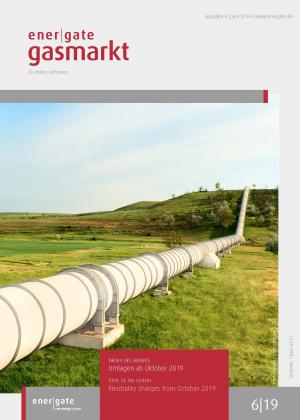The soaring balancing and conversion neutrality charges in October 2018 was one of the top topics last year. There were mainly two reasons for the steep increase:
• An expected increase in the net cost for system control energy after the experience from the winter 2017/18. The cost is only partly covered by the shippers’ payments for balancing energy.
• A massive increase of the NCG liquidity buffers and a decent increase of the Gaspool SLP buffer (only the buffer for the Gaspool RLM account decreased).
After the lifting of the neutrality charges an intense exchange of letters and emails took place between Stadtwerke, traders and sales companies or their associations and working groups on one side, and the market area operators (mainly NCG) and BNetzA on the opposite side. The stakeholders demanded more transparency and clar-ity regarding the basis of the calculations, as well as more predictability. However, nothing happened. At the beginning of this year (unreported by ener|gate Gasmarkt), utilities that do not operate their own balancing groups launched a new initiative to achieve improvements. For this initiative, two working groups of utilities, namely ARGE Gas Westfalen and gas group, formed a coalition. Their main argument and new perspective is that utilities that supply local end consumers but do not operate their own balancing groups get information about the future development of the neutrality charges much too late. This causes problems for the calculation of end consumer prices or enforces more frequent price adjustments.



